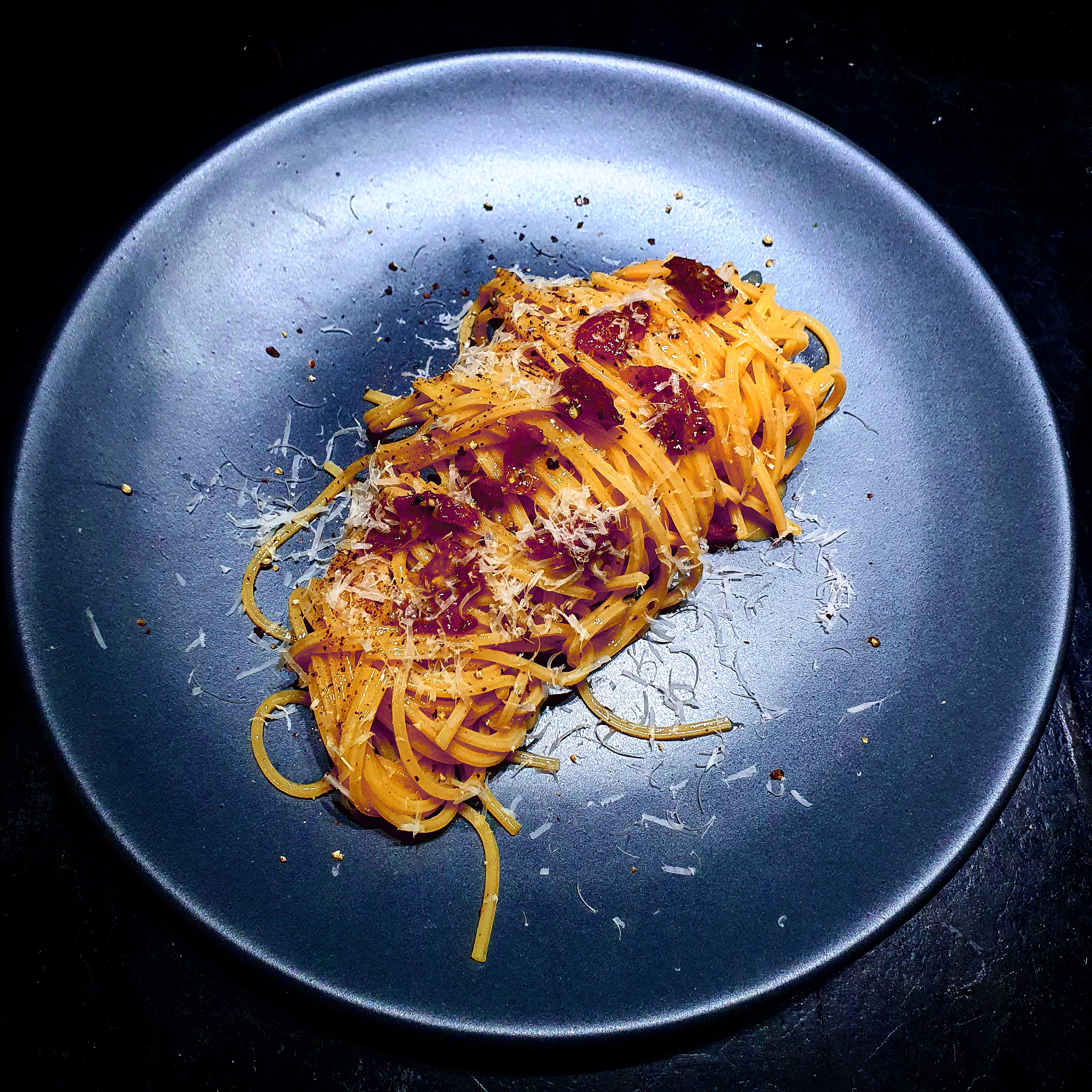If there was one thing I had to eat everyday for the rest of my life, it would be eggs. This dish makes perfect use of them. The only ingredients that need to be somewhat measured are the pasta (to know how many people you can feed) and the eggs (also to match the amount of pasta). The general rule is that a person eats 100g of pasta per plate so just scale it up from there. I’m writing this recipe for two so 200g of dried pasta is what I’m putting down. As for the eggs, it’s one per person and the italians say, “one for the pot”, to account for the little bit left on the sides on the pot. I like to use that “extra” egg as just the yolk for extra richness without the extra liquid. Everything else is up to you but I don’t think there’s such a thing as “too much” cheese or bacon so whenever you think is enough, add a bit more.
A note about the ingredients. Guanciale is bacon made with the jowl of the pig, yes the face. If you can’t find it, you can use pancetta. The curing method for both is pretty similar so it’ll give you a close-enough flavor. Use fresh eggs because yes, we are not really cooking them. If that makes you uneasy, I feel like you might be in the wrong blog. Peccorino is NOT the same as parmesan cheese, it’s sharper, saltier, and generally just more of a jerk. So make sure you use the right cheese. As for the pasta, you can make fresh pasta or get fancy pasta but I think dry pasta is pretty damn good, as long as the brand sounds mildly Italian.

Ingredients
– 200g spaghetti
– Guanciale
– 2 eggs and one extra yolk
– Peccorino Romano (grated finely)
– Black pepper
– Salt
Boil a pot of water and salt it enough so it tastes like ocean water. Once boiling, add pasta and cook per the directions on the box. This is the one time you want the pasta actually cooked all the way or at least slightly past al dente. Do all the next steps while you wait for the water to boil.
Slice the guanciale thinly and spread in a cold pan. Put it on a medium flame until it renders most of the fat out of the pork. It’s done when golden but not extra crunchy. Save the fat.
Whisk the eggs in a large bowl. Once homogeneous, add the peccorino cheese and the pepper. When the guanciale is done cooking, add that to the mixture and finish incorporating it. Let the rendered fat sit in the pan with no heat.
If you’ve timed it right, it should all come together like a well synchronized ballet at the end. Drain the pasta, add it to the warm pan that had the fat in it. Add the egg mixture on top and toss the pasta until it’s all coated evenly.
You should not need to salt it since the guanciale and the peccorino are salty enough, but if you so desire, do so with a finishing salt.
